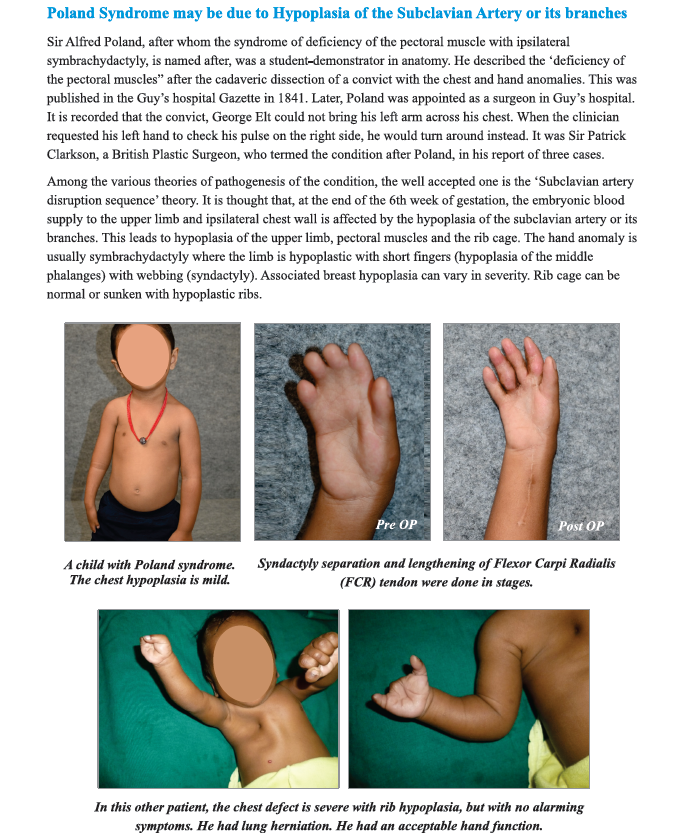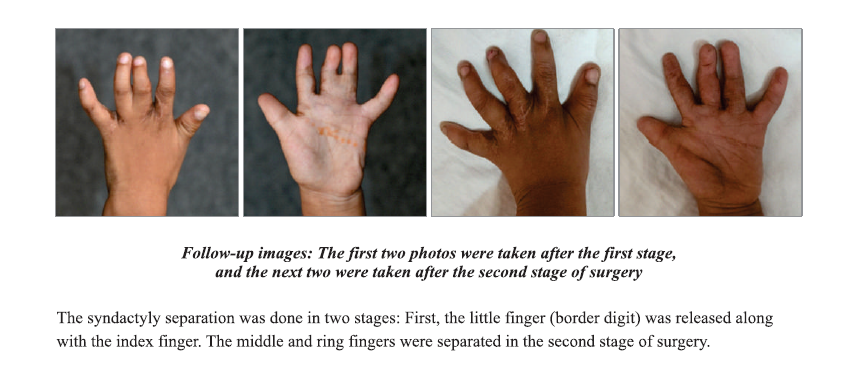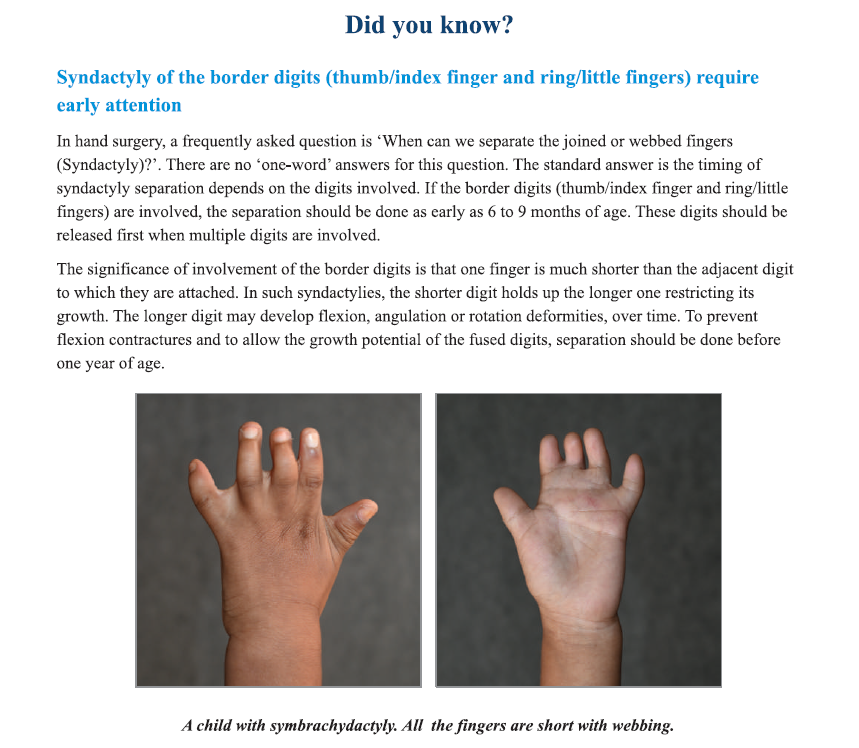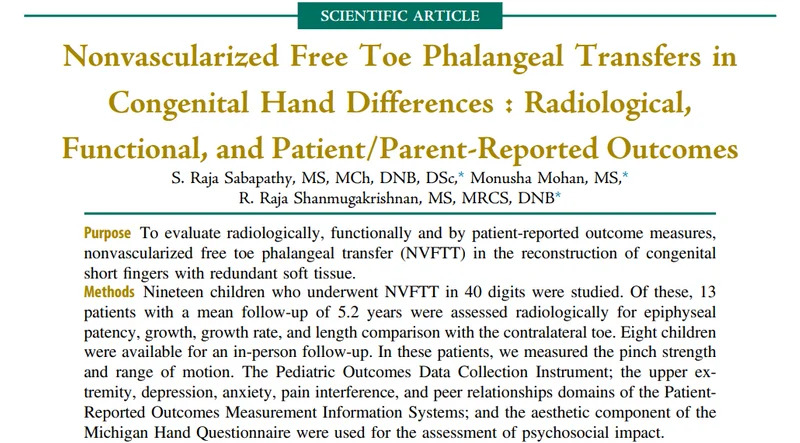Symbrachydactyly
Symbrachydactyly is typically unilateral. The fingers are short or absent with absence of a few phalanges and are stiff. This condition may be associated with absence or under development of the chest muscles and/or ribs.
Cause
The exact cause is unknown. This malformation is due to failure in formation/differentiation of the limb or hand. This condition does not run in families.
Treatment
The surgical options include non-vascularized free toe phalangeal transfer and microsurgical free toe transfer. In the former procedure, the phalangeal bones from the toes can be transferred to the soft tissue nubbins in the hand to create fingers. This procedure has been found to have better results when performed before 18 months of age. The latter is a major procedure that takes around 10 hours. The second toe from the foot is transferred to the hand to create a thumb or little finger using microsurgical techniques. We at Ganga, have world renowned microsurgical experts to do the joining of the tiny arteries, veins and nerves. The toe transfer is done when the child is 3-4 years of age.
Patient 1
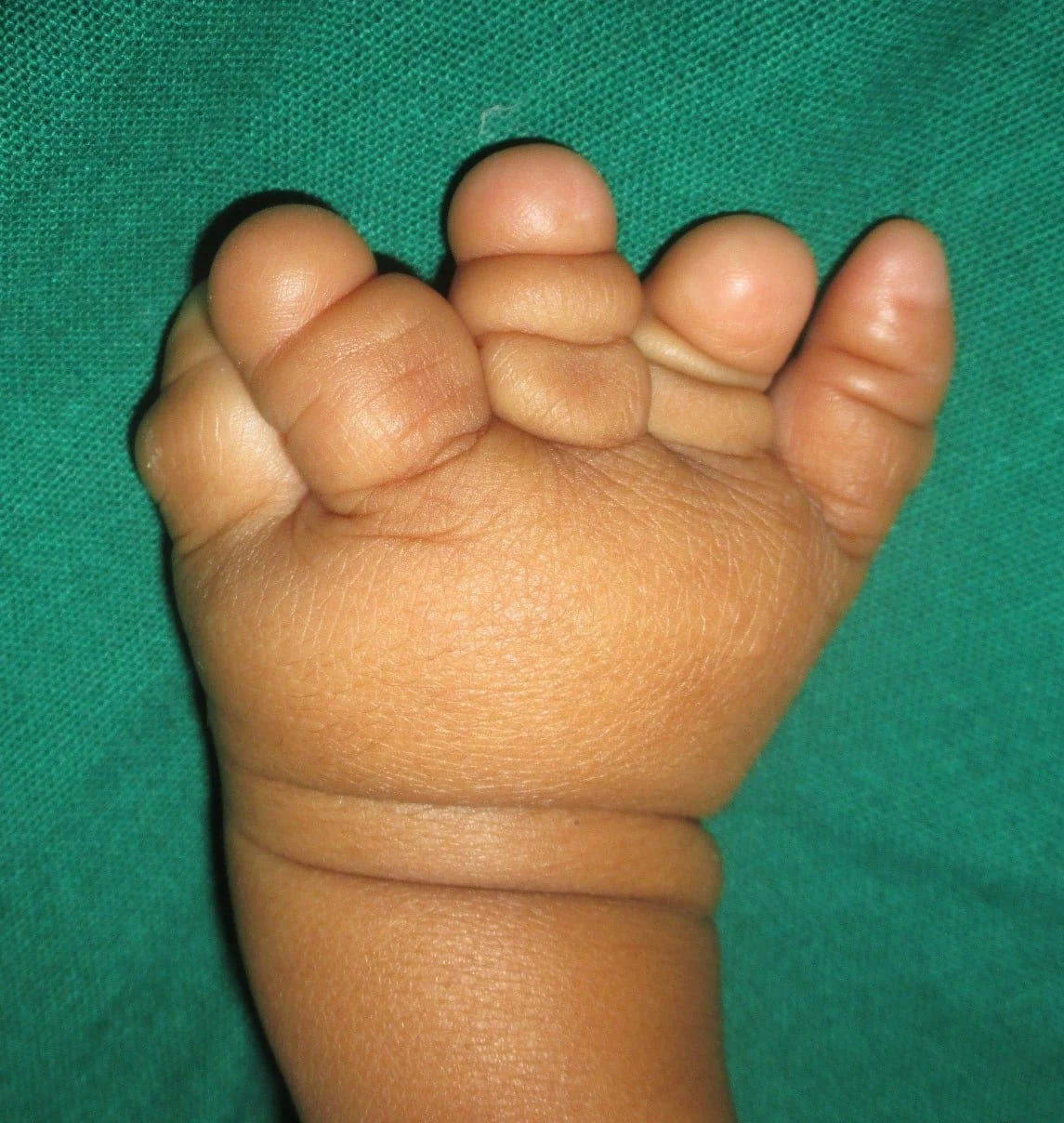
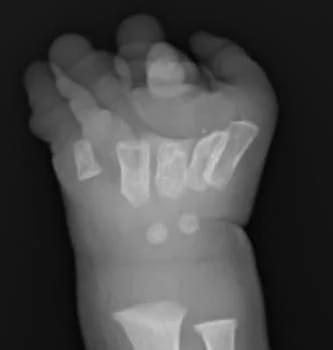
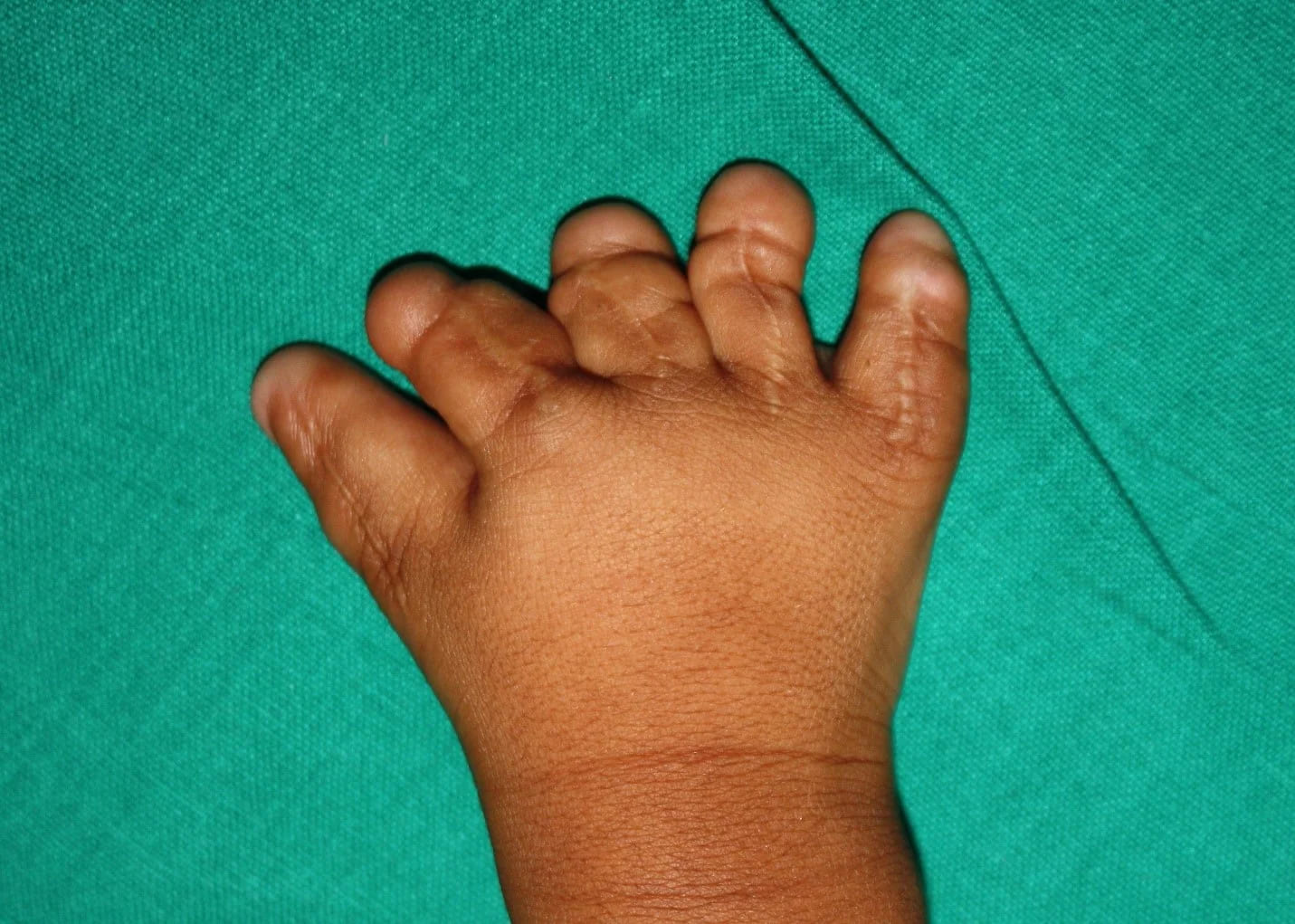
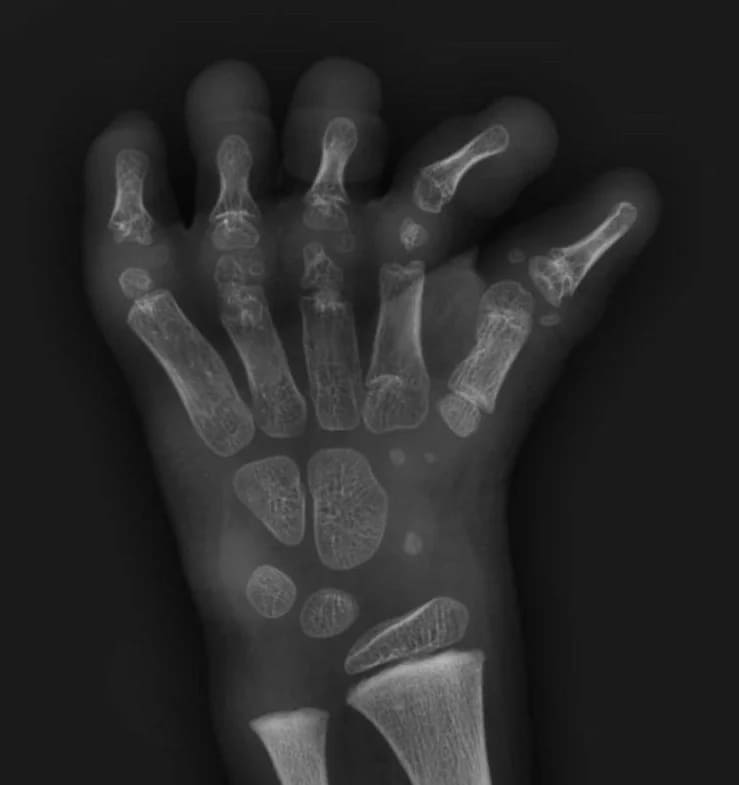
Reconstructive of all the short digits without bone using phalangeal bones from the toes
(Non-vascularized toe phalangeal transfer)
Patient 2



Creation of a little finger using a phalangeal bone graft from the toe








